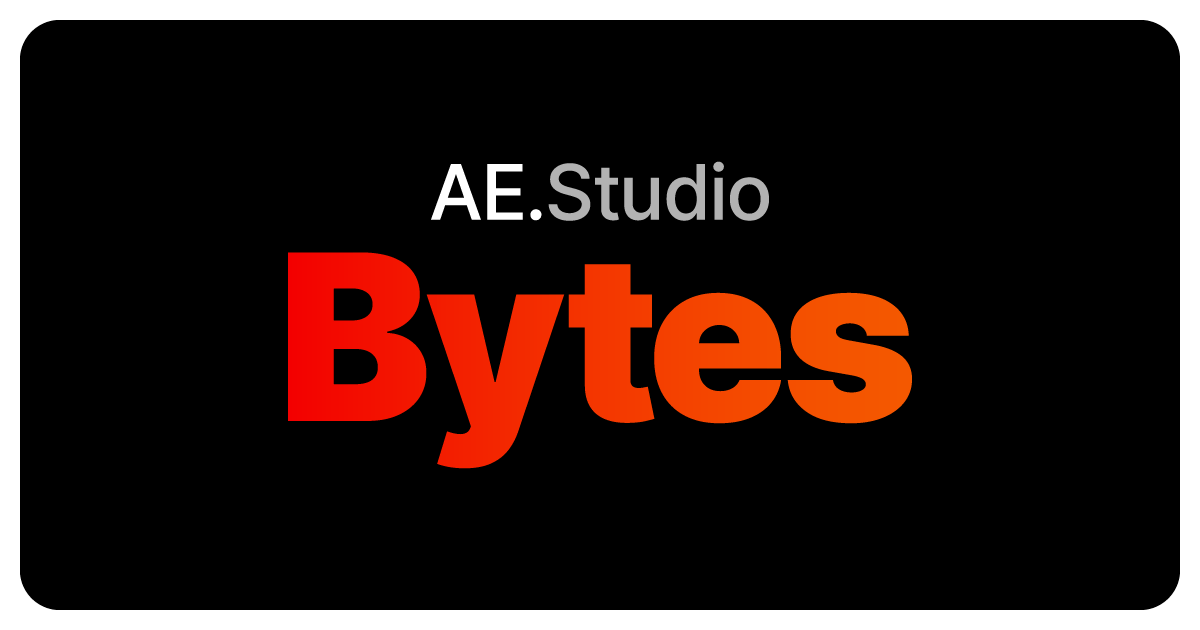- AE Studio Bytes
- Posts
- AI Success Series [Part 5]: 4 principles for developing valuable AI products
AI Success Series [Part 5]: 4 principles for developing valuable AI products
This is the foundation of all our AI projects


This email is part 5 of our AI Success Series, where we break down the three fundamental mistakes that doom 85% of AI projects to failure (and how to make sure yours succeed).
You can access the previous issues here:
===
The toughest thing about building with AI?
It isn't predictable like regular software.
Traditional software is deterministic, like a vending machine. You put a dollar in and get one candy bar out, every time.
But AI systems are probabilistic.
Sometimes you get a candy bar, sometimes you get trail mix… and occasionally, you get something nobody's ever seen before 🍫🤷♂️
This is why so many development teams crash and burn when they try to build AI products, or incorporate it into existing ones.
Treating it like software development doesn’t work!
After years of helping our clients at AE Studio integrate AI into their businesses (and witnessing countless expensive failures elsewhere)…
We’ve developed four principles for consistently building successful AI products:
1. Think experiments, not features
With normal software, you write a spec, build the feature, and it either works or it doesn't. Simple.
But AI products laugh at your neat little plan.
As mentioned, AI work is inherently probabilistic. So don’t think in terms of “we’re shipping features.” What you’re really doing is validating hypotheses.
You find out if the AI delivers business value by doing small, quick tests exploring behavior, not just coding static outcomes.
2. Define success early
“We'll know what we’re looking for when we see it” is how teams burn six months and six figures on AI projects that go nowhere.
So before a single line of code is written, get clear on what success looks like.
Ideally, success = real-world outcomes that users actually care about, not just random internal benchmarks.
If the whole team is clear on this from the start, you’ll keep everyone aligned and avoid wasted iteration.
3. Build for change
AI systems constantly evolve, and so should your product.
Your AI needs scaffolding for future growth. You’ll have to build in the capacity for:
Retraining
Incorporating new data
Making quick adjustments based on real-world feedback
This way you don’t have to tear the whole thing down and start over every few years.
This is also why ground truth matters more than the product’s current feature set — you’re aiming for accuracy, behavior, and user alignment over time.
And, cross-functional teams working in sync is non-negotiable. When the engineering, data science, and product folks all work in silos, momentum grinds to a halt!
4. Ship early, learn fast
A pristine test environment can't capture the wild, unpredictable ways humans will interact with a non-deterministic system.
So it’s literally impossible to know if your AI product works until it's survived contact with actual users. All the real learning happens post-launch.
Traditional Agile won’t cut it. That’s why our dev teams reframe Agile to fit AI by focusing on:
Testable experiments
Time-boxed releases
Weekly iterations with tight feedback loops.
That’s all for this miniseries!
We’ll be back soon with more nuggets of wisdom from the trenches.
If you’d like our help building a custom software or machine learning solution for your organization, you can get in touch with us here:
For more info about the work we do at AE Studio, our mission to increase human agency, and our client case studies, pop on over to this page.
More to come soon,
— The AE Studio Team
